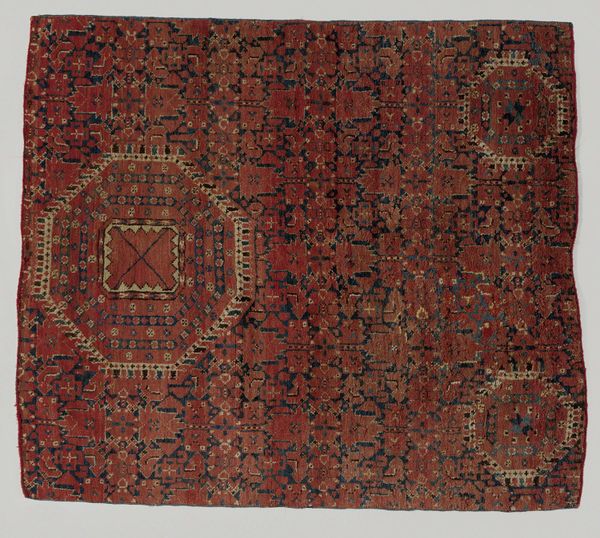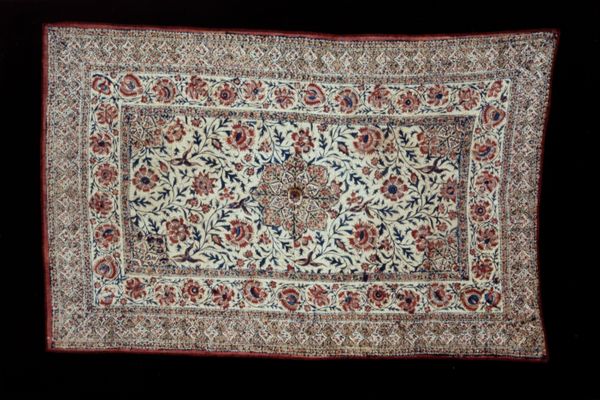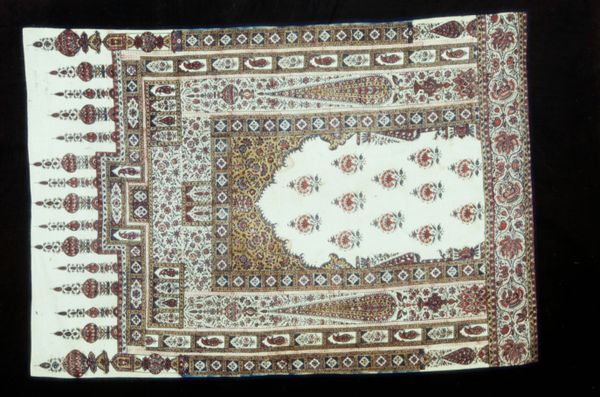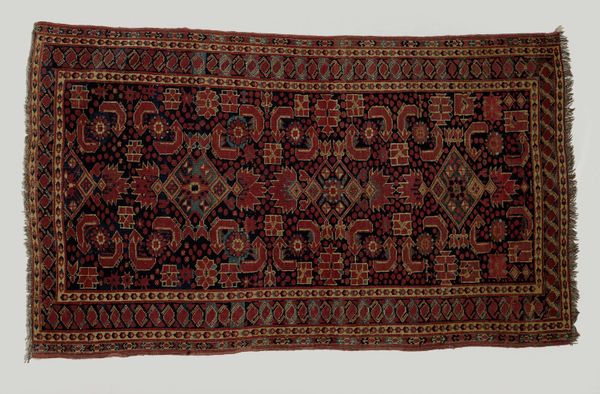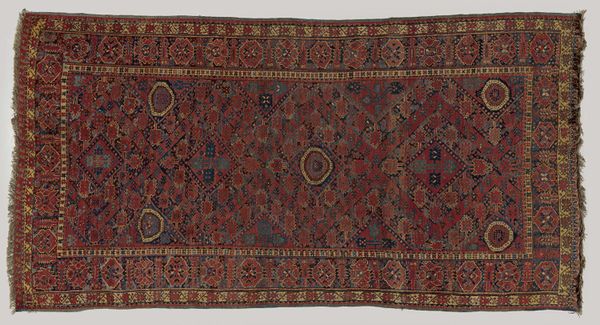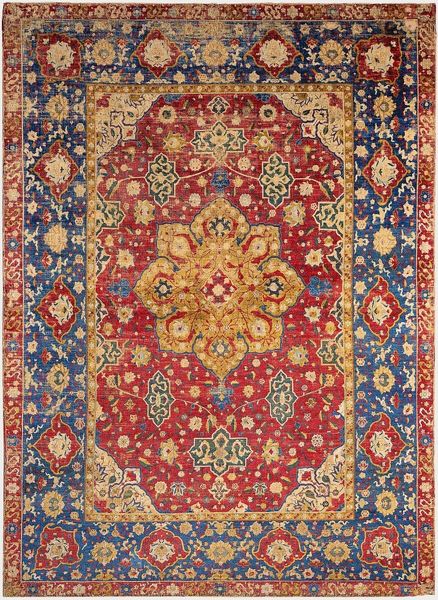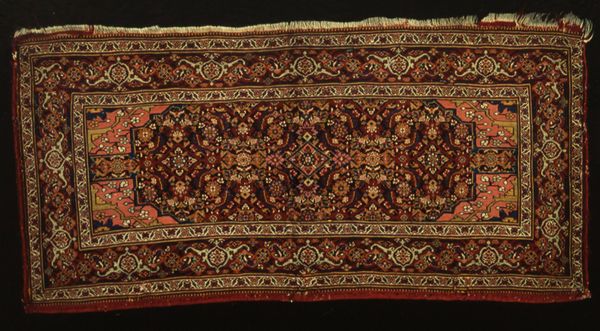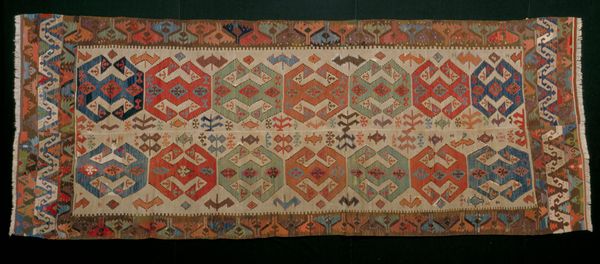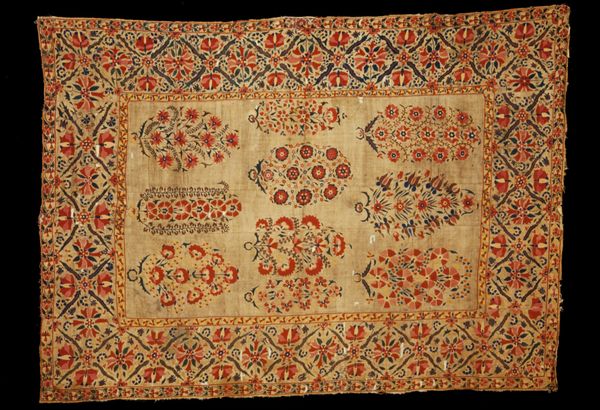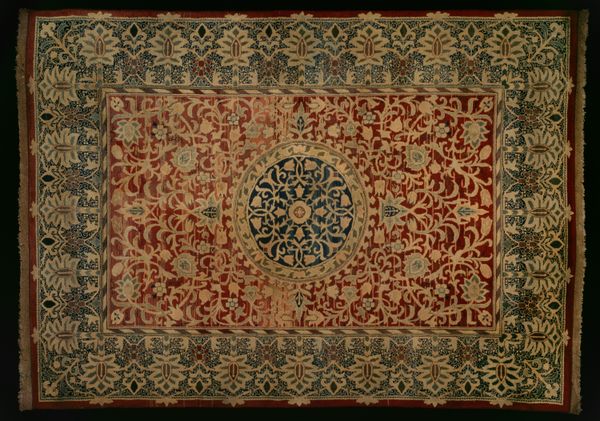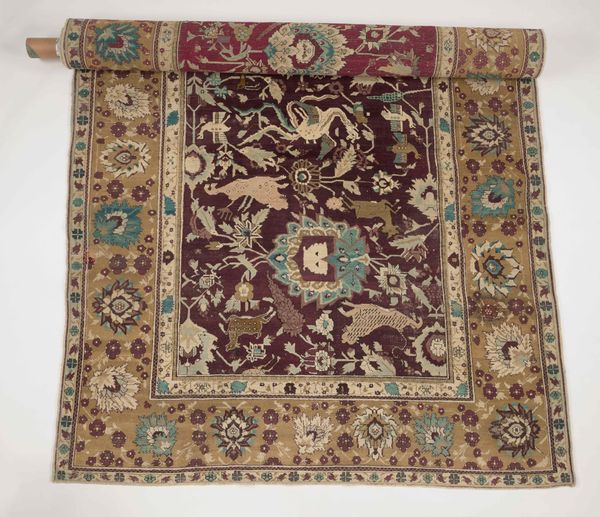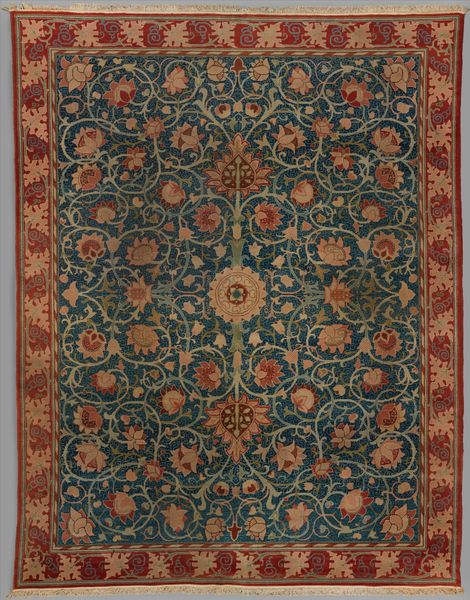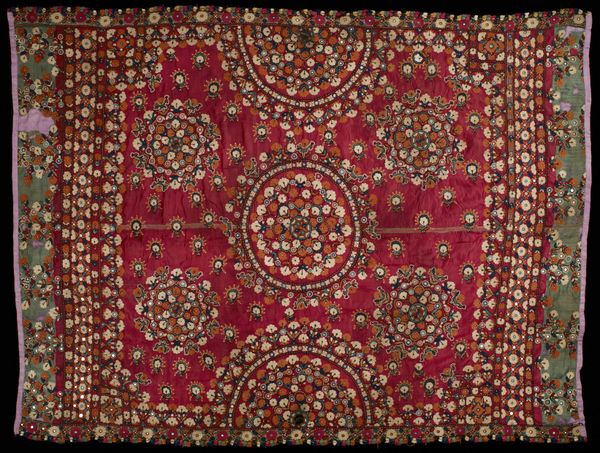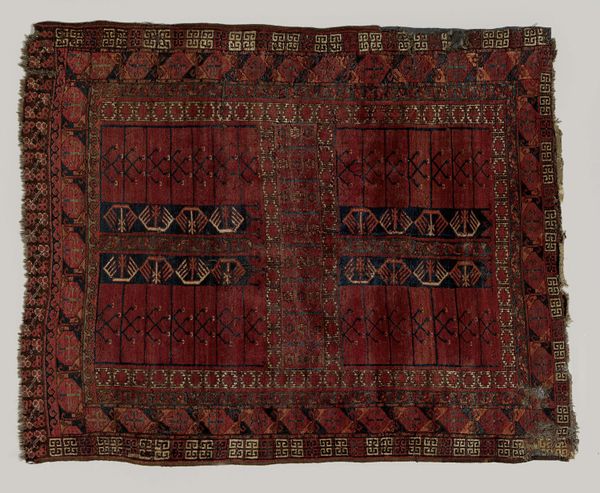
weaving, textile, cotton
#
pattern
#
weaving
#
textile
#
geometric pattern
#
geometric
#
orientalism
#
cotton
#
islamic-art
Dimensions: 149 x 122 in. (378.46 x 309.9 cm)
Copyright: Public Domain
Editor: Here we have an eye-catching rug, a textile made of cotton, dating from the late 18th century. I'm drawn to its intricate geometric patterns and the way the colors, especially the reds and blues, create a sense of depth. What strikes you most about this piece? Curator: For me, this rug offers a window into the complex historical relationship between East and West. Its Orientalist style, while visually appealing, reflects a long history of cultural appropriation and misrepresentation. Who benefited from these depictions? What narratives were being told, and whose stories were silenced in the process? Consider the labor involved in weaving this rug. Who were the weavers, and what were their social conditions? Editor: That's a perspective I hadn't considered. I was focused on the aesthetics. Do you think that enjoying the visual aspects of the rug is somehow negating the historical context you’ve mentioned? Curator: Not at all. It's about being aware of the full picture. We can appreciate the artistry while critically examining the power dynamics embedded within its creation and consumption. The rug, made of cotton and a product of weaving techniques perfected over centuries, invites contemplation beyond surface beauty. How does understanding the weaving techniques connect with larger cultural exchanges? What are your thoughts? Editor: It really opens my eyes to think of it that way; it adds layers of meaning I hadn't considered before. It prompts a consideration for cultural awareness, moving beyond mere visual appeal. Thank you. Curator: My pleasure.
Comments
No comments
Be the first to comment and join the conversation on the ultimate creative platform.
